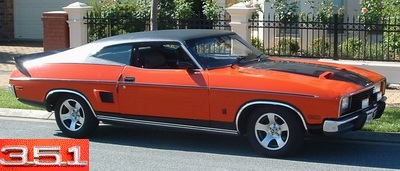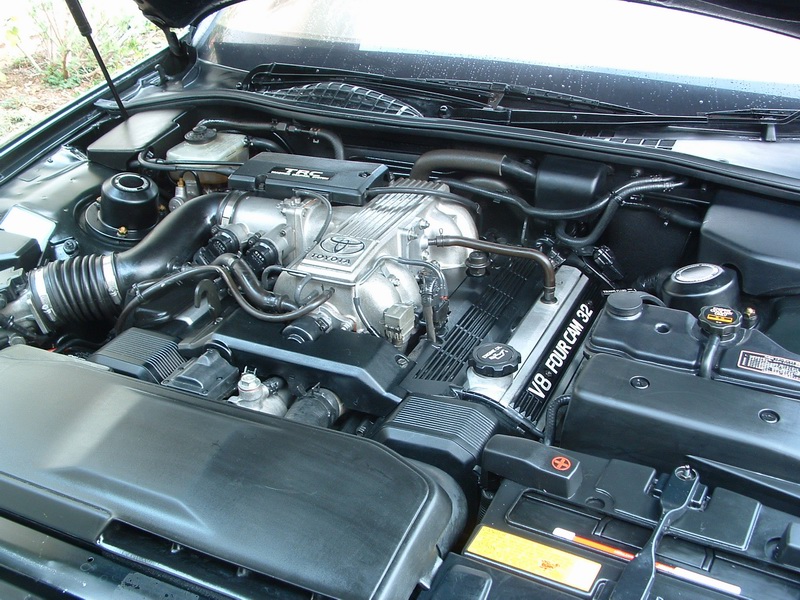 |
Idle Air Control Valve |
December 2005
by Peter Scott Replacing the cheap bearings in the Idle Control Valve for that new car idle.
In the old days a screwdriver was all you needed to set the idle (once the points and the timing were right!). For example on my 1977 Ford Coupe with 750 four barrel Holley equipped 5.8 L V8, idle is set to a lumpy 650 rpm in seconds with a just a screwdriver or a butter knife :)

My current Aussie Muscle car gets by with no computers!
But on the mighty Soarer idle is controlled using smoke and mirrors! The Idle Air Control Valve is controlled by the ECU. It is a small electric motor that turns a valve and controls how much air the engine gets when idling. The throttle is is shut tight and this little item runs the whole show.

On the V8 the IAC is located right on top in the middle of the engine - in front of the Toyota Badge. It takes clean filtered air through that rubber pipe and meters it to the engine. It makes the engine rev high when it's cold and slowly steps down as the engine warms. It also responds to air-conditioning demands and power steering load. Very clever.
Often it plays up.. Second hand IAC valves are a hot-ticket item from second hand parts dismantlers. They do stuff up. Common symptoms are poor idle and stalling. I've seen idle loop from 1000-2000 rpm continuously with a faulty IAC valve - very ugly indeed.
It's not always the IAC valve that causes poor idle and stalling though. Sometimes it can be a faulty fuel pump ECU.
Faulty Fuel Pump ECU and other causes
The fuel pump ECU can be tested by by-passing it using a bent steel paper clip & bridging the Fp & B+ terminals of the engine diagnostic port. This will make the fuel pump run at full capacity all the time - no safety off when the car stalls or crashes, no half speed when you are cruising - so best to bite the bullet and spend the $270 to replace it if it is faulty. A common failure on the TT and V8.
Other problems have been solved by a new battery and a new earth strap.
If you are convinced that the fuel pump ecu needs replacing then:
1. Remove rear passenger side (the "batttery" side) interior trim. A few screws
and it lifts out. You may find that removing the back seat is needed. To do that just lift
the base up then pull out.
2. Locate and unscrew ECU from chassis, noting the direction and position of mounting.
3. Unplug harness carefully. It can be red hot so check that before just grabbing it.
4. Plug in "new" ECU,
5. Remount in same position as old ECU.
6. Pop trim back on.
7. Pull main EFI fuse in engine bay fuse box to reset ECU, and take for a drive
The IAC valve can often get stuck internally and the idle suffers.
The entire IAC valve does not need to be removed like in the above pic. I think it's easier to just remove the black bit with the three Phillips head screws. To remove the whole thing means coolant draining or spills, spark plug wire cover removal, intake out etc etc - it can take up to 10 minutes (but I've done it countless times - first time took ages!) - but the black bit can come off in under a minute.
The black bit contains the motor and the bearings that seize. Really I think it's the only bit that needs to come off.
These are the two bearings - I cleaned them and put back in - better, but not good enough so I bought some new ones. The numbers are 6902V and 608V. Very common and very cheap. Any bearing place will have them.
This is the other bit that gets sticky. The electric motor turns about this thread and moves the shaft in or out to vary the air intake.
I cleaned this shaft thoroughly and used a anti-seize compound on it.
As the valve opens and shuts the air gap changes and the idle speed changes.
This is my spare IAC - it was burn't in an engine fire so I got it cheap. This inside bit can get corroded - I scrubbed it with a toothbrush and CRC electrical contact clean.
The bearings support this magnet that rotates - the bottom one was easy to remove - the top one I had to support the bearing outer lip on a vice and tap out the shaft with an appropriate sized socket on the shaft to gently knock it off without damaging the motor bit.
I greased the o-rings with a smear of rubber grease. Again I did all the work on an oil drip tray on the bench - it works a treat keeping everything clean and I don't loose so many bits!
I love how the manual lists a huge procedure to remove and test the valve. Then says chuck in the bin if faulty!!
Go here if you want to order a complete workshop manual.
Once I had reassembled my IAC valve I didn't leave a very large gap for the air to pass through - in fact the valve was nearly closed. I started the car and it wouldn't idle. I had to use my foot on the accelerator to get the engine to run at all. I was hoping that the IAC would adjust itself ok shortly. The engine stalled and I tried again. After a couple of starts and stalls the engine sorted itself out. It got better and better as the ECU and the IAC talked and got the show running. Now the engine runs perfect with no stalling and perfect smooth idle. No more hunting idle.